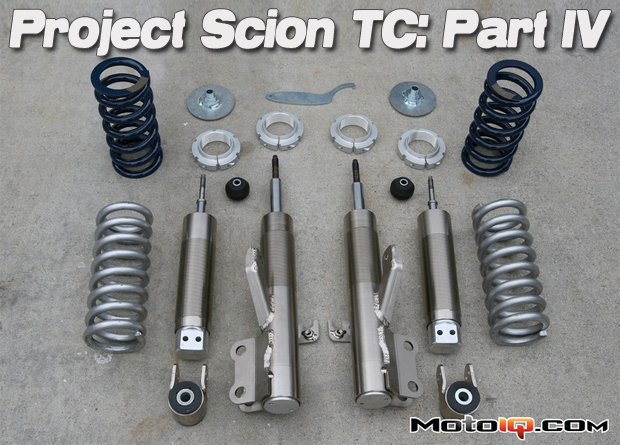,
 |
| The crossmember that holds the rear suspension to the chassis floats on these big squishy rubber bushings. The rubber allows for a lot of movement that makes the back of the car vague and twitchy. These Energy 80 durometer polyurethane bushings eliminates nearly all of the movement and makes the handling a lot more predictable. |
Our next task was to eliminate the bushing gush and flex out of Project TC’s suspension. It was obvious to us that the TC was built first to ride well and have minimal NVH (engineer speak for Noise, Vibration and Harshness) with crisp handling a distant priority in the overall scheme of things. Gush is bad if you are interested in handling, especially when building a racecar. For a car to handle well its suspension should work to keep the alignment true and the tires contact patch flat on the ground under load. It should also point its wheels in the direction that the driver directs it. The frictional grip of a car’s tires can transfer over a thousand pounds of force to the suspension, the suspensions arms act as levers on the suspension’s pick up points multiplying this force to well over that. Sticky R-Compound tires make this situation even worse.
 |
| Energy bushings replaced the front swaybar bushings to help improve responsiveness. |
This force is brought to bear on the soft biscuits of rubber known as the suspension bushings at the pivots of every street car’s suspension. The rubber is an excellent choice as a material for your average driver whose idea of whipping a fast turn stresses a car to 40% of its maximum lateral capability, who gets annoyed by bumps and noise. For those who like to stretch the envelope, the smooth riding rubber means a lack of steering precision and a loss of grip due to the shifting alignment. As far as soft rubber goes, Project TC must have been the poster child for the rubber industry.
 |
| When installing urethane bushings, it is important to use Energy’s silicone grease. This sticky tenacious stuff is one of the only things that can keep the bushings from squeaking. WD40 is one of the only things that can remove it! |
The rear suspension’s crossmember was hung on huge squishy rubber bushings with large windowed cutouts to add additional shock absorbing compliance. The lower trailing arms main bushing was a huge cut out rubber biscuit as well. When moved with a prybar to simulate tire loading in hard cornering, it was possible to get the rear suspension to move nearly a half inch in either direction. When 1/16th of an inch of tire movement is something most drivers can feel, one inch is extreme and makes precise driving at the limit an iffy proposition.
 |
| The rear lower control arm bushings need some flex to prevent bind. The rear bushing is solid. |
 |
| The front bushing of the lower control arm has these slots to allow some flex. With this compliance, bind is reduced and the suspension will toe-in slightly under load. This is ok as it will help stability. |



